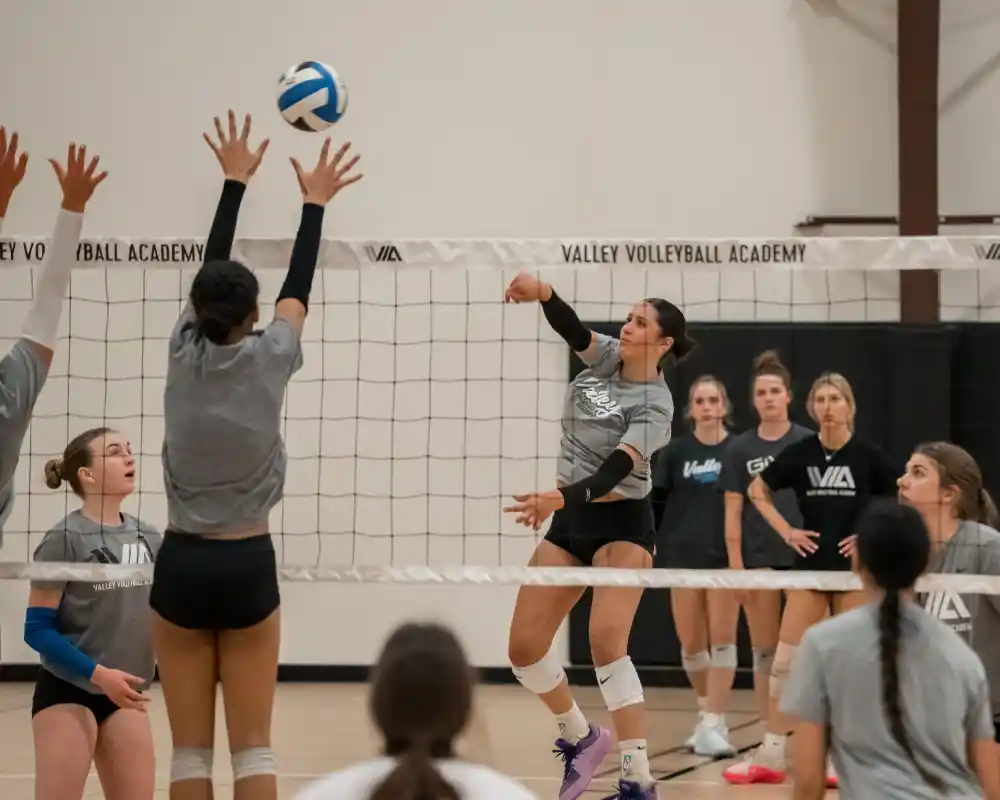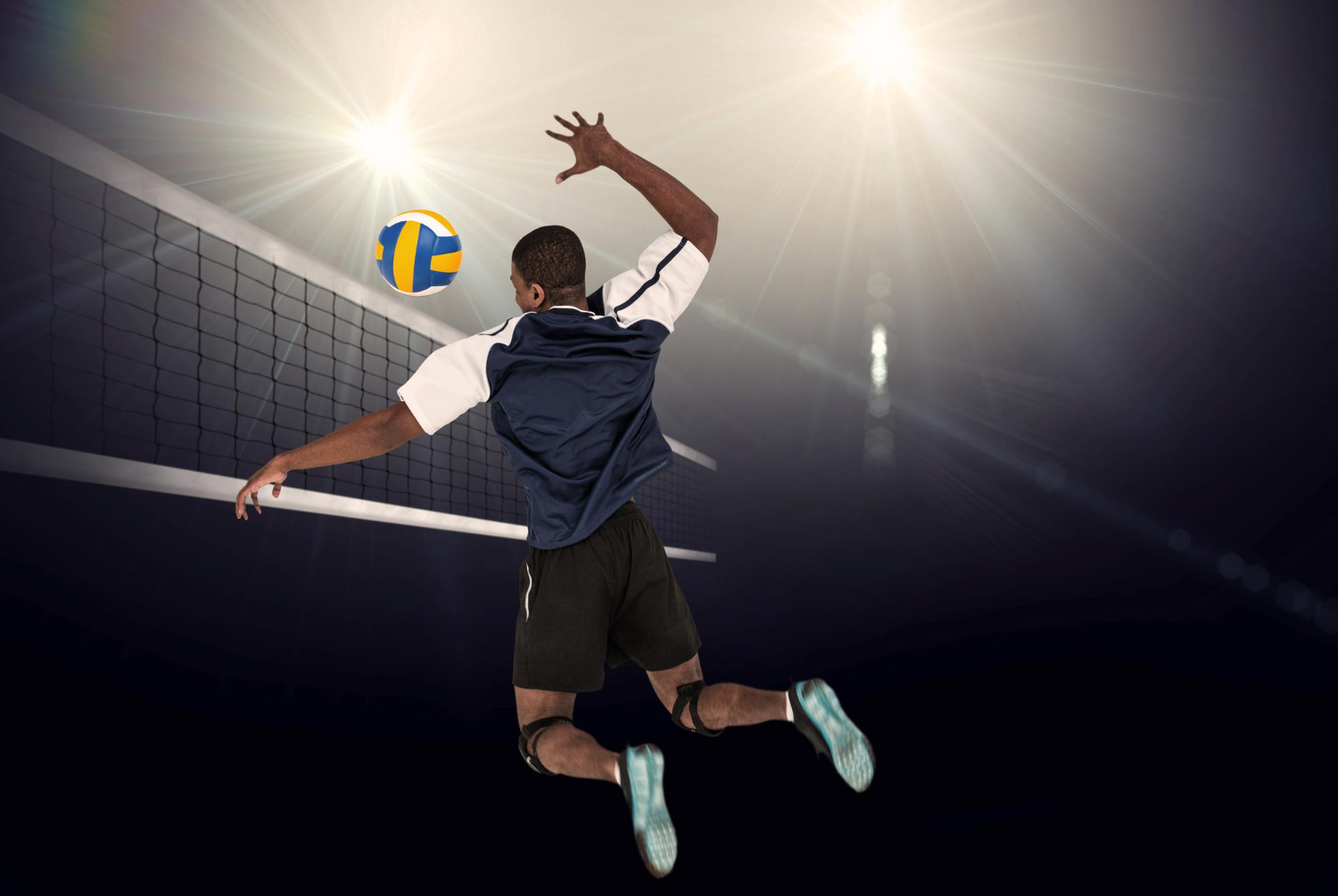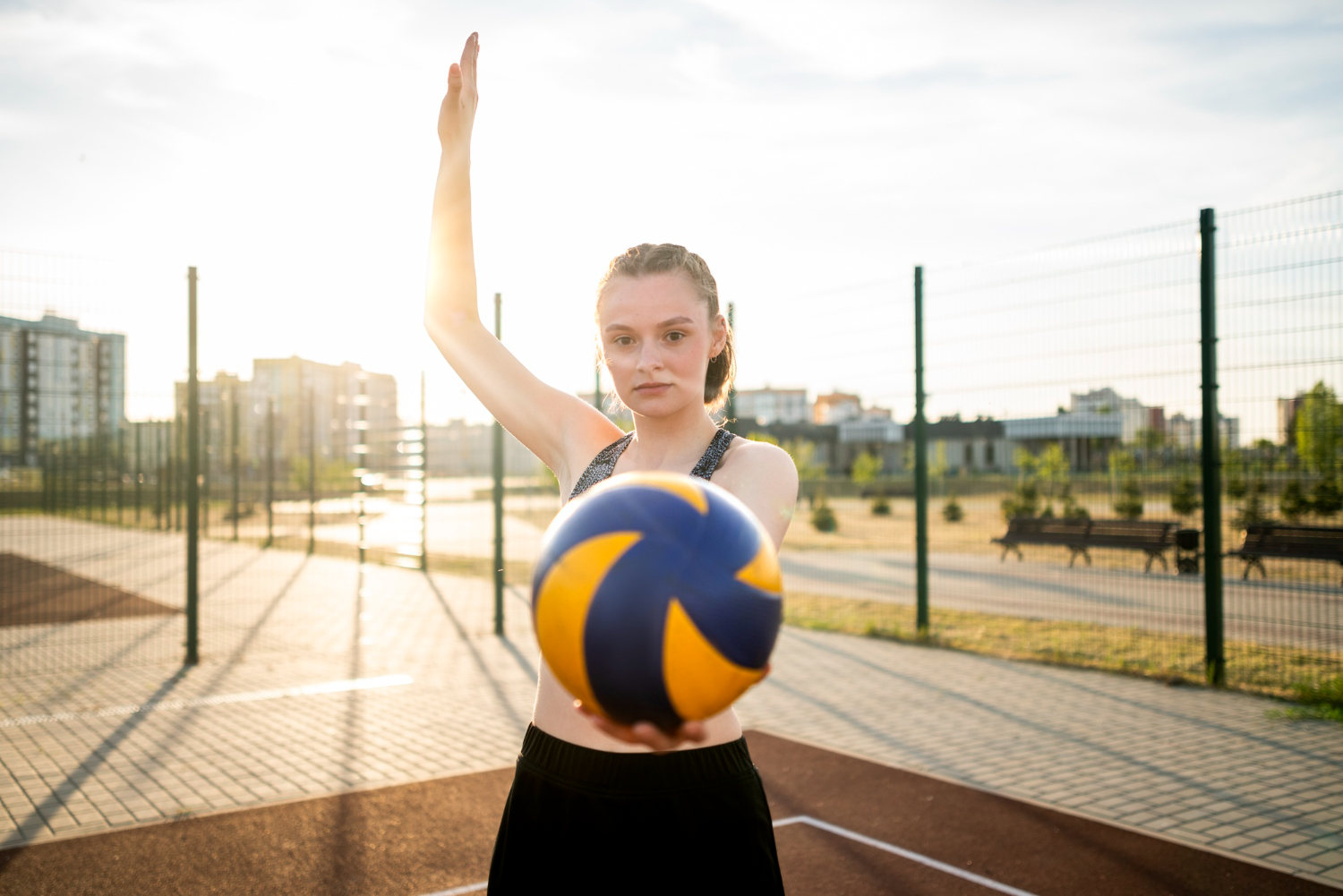Table of Contents
ToggleHave you ever watched a volleyball game and wondered why the players keep switching spots? If you’re running games at your sports facility, offering gym or court rentals, or just helping new players get started, you’ve probably heard this question before. The idea of volleyball rotations might look confusing at first, but it’s actually pretty simple once you get the hang of it. And if you’re someone who organizes games or helps beginners, knowing how it works makes things way easier for everyone.
Let’s break it all down in the simplest way possible.
What are Rotations in Volleyball?
In simple terms, Rotation in volleyball is a rule where players change positions on the court in a clockwise direction whenever their team wins the point after the other team served. It’s not just a routine, it’s an important part of how the game stays fair and fun.
Each team has six players on the court, and they all rotate so everyone gets a chance to serve and play at the net. This helps mix up roles and keeps the gameplay dynamic. Understanding volleyball rotation is key whether you’re a coach, a player, or just renting out courts for friendly games.
What Are the 6 Positions in Volleyball?
Imagine cutting the volleyball court into six equal slices. That’s where players stand when rotating:
- Back right (where the server stands)
- Front right
- Front middle
- Front left
- Back left
- Back middle
Each of these spots plays a role in volleyball positions rotation. The team rotates clockwise through these positions each time they win the serve.
What Do Players Do in Each Position?
In each position, players take on different responsibilities:
- Setter: Passes the ball to hitters for attacks.
- Outside Hitter (Left-Side Hitter): Usually attacks from the left and helps pass.
- Middle Blocker: Blocks the opponent’s attacks and hits quick middle balls.
- Opposite Hitter: Attacks from the right and plays defense too.
- Libero: Defensive player in the back row who wears a different jersey.
- Defensive Specialist: Similar to a libero, plays only in the back row.
This setup is the foundation of volleyball positions and rotations, helping teams stay balanced and effective.
How Do Players Rotate in Volleyball?
So, how exactly do players rotate during a match? When your team wins a rally and you weren’t the serving team, it’s your turn to serve, and that’s when your players rotate. Everyone on your team moves one position clockwise.
Here’s the rotation pattern:
- Back right → Front right
- Front right → Front middle
- Front middle → Front left
- Front left → Back left
- Back left → Back middle
- Back middle → Back right (where the new server stands)
Why is Volleyball Rotation Important?
If you’re managing a court or organizing games at your gym, helping players understand volleyball positions rotation makes your space feel more professional and welcoming. Here’s why it’s important:
- Keeps games fair by giving everyone a turn in each spot
- Avoids confusion and delays during play
- Prevents illegal serves or position faults
- Makes your facility more beginner-friendly
- Helps build confidence in new players learning volleyball positions and rotations
Whether it’s for league play or casual games, having a clear idea of rotation in volleyball helps things run more smoothly.
Volleyball Rotation Rules
Before jumping into a game, it helps to know a few key rules that keep volleyball rotations running smoothly. Here’s what you need to know:
- Six Positions: Every team has six players on the court, each rotating through six numbered spots, three in the front row and three in the back.
- Rotation Order: Players rotate clockwise whenever it’s time to switch. Think of it like moving one seat to your right every time your team wins the serve back.
- When to Rotate: Rotation happens after your team wins a point on the opponent’s serve, this is also called a “side-out.”
- Overlap Rules: Right before the serve, players must stand in their correct relative positions. That means back-row players should stay behind front-row players, and right-side players should stay to the right of their teammates.
- Libero Exception: The libero doesn’t follow the usual front-row volleyball rotation. They only play in the back row and have special substitution rules, often entering without needing a formal sub.
- Consequences of Errors: If players are out of position when the ball is served, it’s called a rotation fault, and the other team gets the point. That’s why getting the positions right is super important!
What Are the Different Types of Volleyball Rotations?
Depending on your team’s skill level, there are a few different ways to set up rotations. Here are the most common ones:
- 4-2 Volleyball Rotation (Great for Beginners): In a 4-2 volleyball rotation, there are two setters on the court, and one is always in the front row setting. This makes it easier for players to focus on basic skills. It’s the best choice for beginners or casual games where learning the fundamentals is the goal.
- 6-2 Volleyball Rotation (Good for Intermediate Players): In a 6-2 volleyball rotation, the setters are always in the back row. That way, the front row always has three attackers available. This makes your offense stronger. This setup is common in high school or competitive recreational leagues.
- 5-1 Rotation Volleyball (Advanced Play): A 5-1 rotation volleyball system means there’s one main setter who plays all the way around the court. This gives your team one consistent leader for setting the ball, but it requires more advanced skills. It’s popular in serious leagues and college-level play.
Knowing which system, you’re using helps a lot when organizing matches or coaching players.
Does the Libero Rotate?
Not exactly. The libero is a unique position. This player only plays in the back row and doesn’t go to the front. So, they don’t follow the regular volleyball positions rotation. Instead, they can come in and out of the game (without counting as a regular sub) to replace any back-row player.
Also, depending on the league rules, the libero may or may not be allowed to serve. So, it’s always good to check.
At Valley Athletics, we believe great games start with solid foundations, and knowing how volleyball rotations work is one of the first steps. Whether you’re setting up casual games, training sessions, or tournaments, a clear understanding of volleyball positions and rotations helps players perform better and enjoy the game more.
Level Up Your Volleyball Skills Today! Explore Our Volleyball Programs Now!
FAQs
Q: Do you have to rotate in volleyball?
Yes, in six-player volleyball, rotation is a key rule. All players take turns in both front and back-row positions to keep the game fair. If a team doesn’t rotate properly, it results in a fault and the other team gets the point.
Q: Do professional volleyball players rotate?
Yes, even at the professional level, players follow the rotation rules. Coaches use specific strategies to manage rotations effectively so players are in the best spots during the game.
Q: Do setters rotate in volleyball?
Yes, setters rotate just like every other player. In a six-player game, the setter moves through all six court positions as the team wins and loses the serve.
Q: How does a setter rotate in volleyball?
The setter moves one spot clockwise whenever their team gets the serve back. This means they’ll play in both the front and back rows. Teams often use rotation systems like 5-1 or 6-2 to make sure the setter is in the right spot to run plays.
Q: Does the libero rotate in volleyball?
The libero has a different role. They only play in the back row and don’t rotate through all six positions. When the player they replaced moves to the front row, the libero must step out of the game until that player returns to the back row
Q: How does the libero rotate in volleyball?
The libero doesn’t follow the normal rotation. Instead, they substitute in and out for back-row players, usually between plays. They leave the court when the player they replaced rotates to the front.
Q: How many rotations are there in volleyball?
There are six rotation spots in a standard volleyball game, one for each player on the court. Players move clockwise through these positions as the game goes on.
Q: When do you rotate in volleyball?
Your team rotates only after winning the serve from the other team (this is called a side-out). You rotate before your team serves, not after scoring while serving.
Q: How to learn rotations in volleyball?
Here are some simple ways to learn rotations:
- Look at court diagrams to see how players move.
- Learn each position’s role on the court.
- Walk through the rotation with your teammates during practice.
- Talk through it before and after each rally.
- Remember rotation happens only when your team gets the serve back.
- Stay alert to know where you are and where to go next.
Q: Which direction do you rotate in volleyball?
Players always rotate in a clockwise direction.
Q: How to keep track of volleyball rotations?
Here’s how players and coaches track rotations:
- Lineup sheets show the starting positions.
- Hand signals or verbal cues help remind players.
- Players stay mentally focused on the rotation order.
- Coaches give reminders, especially after substitutions.
- Some teams use rotation-tracking apps or charts for better accuracy.
Q: What happens if a team rotates incorrectly?
That’s called a rotation fault. The other team earns a point and gets the serve.
Q: Can players switch positions after the serve?
Yes. After the ball is served, players can move around the court to take on roles that suit them best, like getting into position for hitting or setting, as long as they were in the correct order during the serve.
Q: What’s the easiest rotation for beginners?
The 4-2 rotation is the simplest. It uses two setters who always play in the front row, making the setup easier to learn and follow.
Q: How does substitution affect the rotation?
When a player is subbed in, they take the exact position of the player leaving. They continue rotating through that position’s path. Each team has a limited number of substitutions per set, so they must be used wisely.
Q: What is an overlap in volleyball?
An overlap happens when players are not in the correct spot at the moment the ball is served. If this happens, the opposing team gets the point.
Authors
-
Sarah Baker is a dedicated sports and fitness content specialist with a rich background in athletics. As a former high school volleyball player and track athlete, she understands the transformative power of sports in shaping character and fostering discipline. Sarah is passionate about inspiring youth worldwide to embrace sports, hone their skills, and achieve excellence both on and off the court. She continually expands her knowledge through ongoing education in sports performance and fitness, aiming to empower her audience with valuable insights. Currently, Sarah contributes her expertise to the content team at Valley Athletics, a premier sports facility in Fresno, California, dedicated to developing young athletes in volleyball, basketball, and pickleball.
View all posts -

Jonathan stands as a monumental figure in volleyball, boasting accolades such as National Champion, National Player of the Year, and being one of the select few, just thirteen, to achieve All-American status four times in NCAA volleyball history. His illustrious playing journey took flight at Pepperdine University, culminating in his 2005 NCAA Championship win, AVCA National Player of the Year and Newcomer of the Year titles.
View all posts



